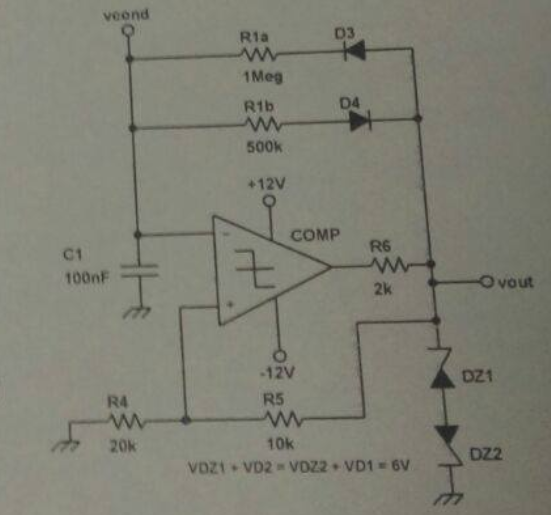I have the following circuit and I have to find the duty cycle of the output signal and its frequency:

I figured out that if \$v_{cond} > 0\$, then D4 will be forward biased and D3 reverse biased, so it's basically a relaxation oscillator with the time constant \$T_{b} = R_{1b}*C_{1}\$, and if \$v_{cond} < 0\$, then D3 will be forward biased and D4 will be reverse biased and the time constant will be \$T_{a} = R_{1a}*C_{1}\$.
The threshold value is 4V, so if the capacitor is fully charged at 4V and it begins to discharge, then it does so with the time constant \$T_{b}\$ until the voltage reaches 0 and then it continues to discharge with the time constant \$T_{a}\$ until it reaches -4V, then it starts charging again and so on.
If my way of thinking until now is not flawed, then on half of the period of the signal I have a capacitor charging/discharging at different speeds and so I'm stuck at finding the duty cycle. It would be quite easy if I could find out how much time is elapsed from the moment the capacitor is fully charged until it reaches zero, but I cannot use the usual relationship \$ V_{cond} = (V_{c_{stop}} - V_{c_{start}}) * (1 - e^{-\frac{t}{R C}})\$, so I'm obviously missing something. After I clear this thing out I think finding out the frequency of the output signal will be quite simple.
Any help is greatly appreciated.
